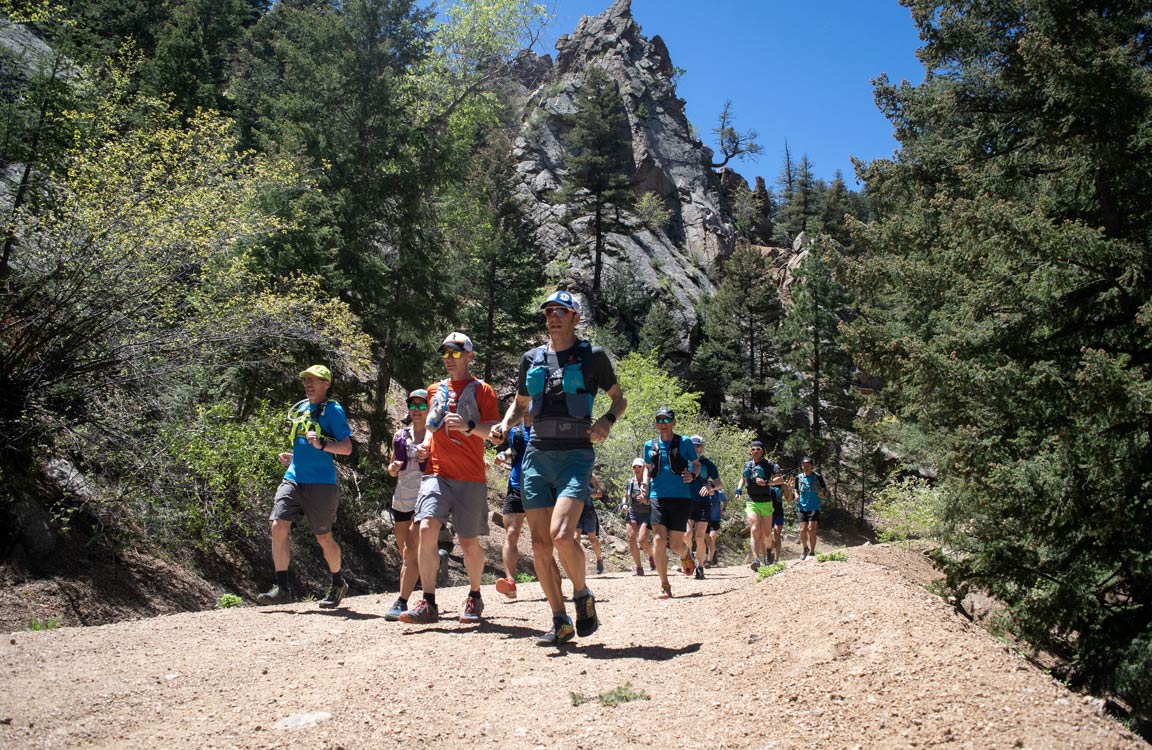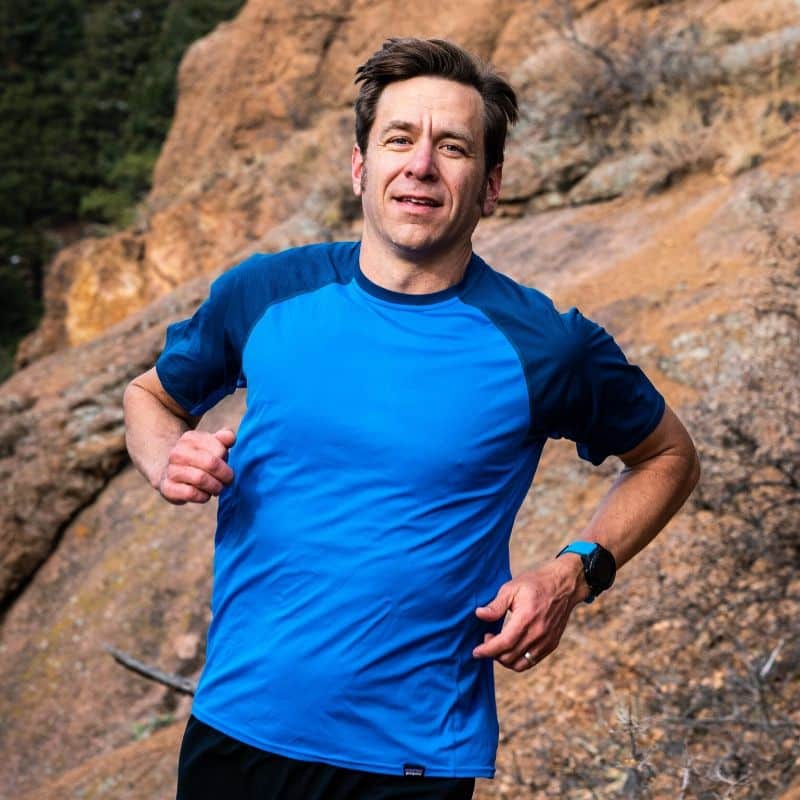
3 Little Things That Go a Long Way for Ultrarunners
By Jason Koop,
Head Coach of CTS Ultrarunning
I recently hosted our annual Memorial Day Ultrarunning Training camp in Colorado Springs, Colorado. The annual camp is a treat for me as I get to open up my house and share my hometown trails with eager athletes of all abilities and experience levels. Runs start and end at my doorstep. The meals, catered by Real Athlete Diets, are all eaten in our dining room where we discuss training, nutrition and gear from the time the athletes arrive until it’s time for bed. Staff stays in my basement, which naturally extends our hours far past a normal bedtime. The camp is quite literally ‘Eat, Sleep, Run, Repeat’ for three very full days.
The athletes always surprise me with their enthusiasm and willingness to push an extra mile… or three. Some come to camp very green, with little to no trail running experience (I’ve been known to take athletes to the local running store to buy their first pair of proper trail shoes or give away some of the many hydration packs I own) to very experienced and accomplished runners. Irrespective of their experience level, they all walk away a bit tired (intentionally) and a whole lot more prepared for their summer races. I also walk away a better coach, as the range of athletes and experience levels pushes me to describe training topics in a universally understandable manner. As I’ve now had some time to reflect on the weekend, here are some lessons any ultrarunner can draw from the experience.
A little guidance goes a long way
Athletes get very personalized attention at camp. For the 24 athletes in attendance, we had 5 coaches, 3 guides and 2 interns to attend to their needs on and off the trails. This means that while out on the trails, any athlete can look to the right, left, front and back and be sure to find a coach who can provide some guidance. That guidance, however, tends to be quite simple. Take, for example, our descending clinic, in which we teach athletes how to descend more confidently, safely and effectively (and not necessarily faster). I’ve descried this downhill clinic in a previous Ultrarunning Magazine article here. In essence, it consists of practicing a proper field of view down the trail and a few pin flags. The rest, I’ve found over the years, tends to take care of itself. Very few cues on foot strike, foot placement or cadence are needed. Just some simple pieces of guidance (‘look down the trail’) that go a long way.
Similarly, our infamous nutrition report card (referenced in this article) has three easy and distinct pieces of guidance:
- Hourly calorie intake of 240-260 cal/hour
- Hourly fluid intake of 16-32 oz per hour
- mg of Sodium per liter of fluid of 600-800 mg/L
That’s it. No color-coded spreadsheets, algorithms, quadratic equations or higher order physics. It’s so simple the athletes do their own math and grade their own papers after the run, with no more assistance than the calculator on their smartphone.
What we find at the end of the camp is that even with the most experienced athletes, they get tremendous benefit out of simplifying things. For myriad reasons, the experienced athletes have gone through their running careers getting far too much advice from too many people. They come to camp having 10 different solutions to the same problem and all they need to do is simplify the answers instead of creating more complexity. In the nutrition example above, we normally end up not using 90% of the different gels, pills, supplements, bars and chews they come with and focus on the one or two that are most effective.
A small challenge goes long way
For our nutrition focused run, I gave the athletes two different objectives to achieve-
- Try something new
- Be in all of the recommended ranges mentioned above
To add a bit of challenge and camaraderie to the exercise, I offered to donate $20 of my own money to the 501c3 non-profit Incline Friends for any athlete with a passing grade (full disclosure, I am on that non profit’s Board of Directors). Cold hard cash that goes to a good cause for a job well done is a cheeky, yet effective, way to get people’s attention. I’m happy to say that ALL of the athletes were up to the challenge and all grades were above a B-. In previous years, at least 1/3 of the athletes failed, so the cheeky challenge did its job.
In training, oftentimes these types of small challenges, regardless of if they are in a group or individual setting, can serve as a break from the monotony or as an extra source of motivation. It can be as simple as colluding with your local training group to do an extra hill or ‘first one back gets a free beer’. As long as the challenge fosters some intentional aspect of development and doesn’t become overcompetitive, you’ll be surprised how even the simplest things can have a big impact.
► Free Ultrarunning Training Assessment Quiz
Take our free 2-minute quiz to discover how effective your training is and get recommendations for how you can improve.
Small changes in habits go a long way
As the summer racing season is in full swing, many ultrarunners are staring at their calendars wondering when, and how long, their upcoming long runs should be. Normally, this is a simple logistical process because they are looking for the right timing and spacing between the last long runs and their goal race. However, as I’ve written about before, one or even a handful of longer long runs represent a small percentage of the overall training load and impact.
Enjoying This Article? Get More Free Running Training Tips
Get our coaches' best training advice, delivered straight to your inbox weekly.
When I am organizing longer long runs for athletes, rather than look to perfect the timing, I look at when the athlete can best set aside the time for a longer long run, almost irrespective of when that long run would occur relative to the goal race. This is because the habits you can create by setting aside the time and giving yourself some space are far more important that the timing of the run. As long as it’s not too close to the race (I prefer greater than 3 weeks for most athletes), there is no magic timing for that last long run.
To come to camp, athletes have intentionally set aside the time and space to do more than normal. They leave their work at home, kick the can down the road for any home projects, get to sleep earlier, and are even are more conscious about hydrating properly – all in an effort to get the most out of the long weekend. These small changes in behavior enable them to handle the increase in training volume, which is normally 2-3 times what they would do for any 3 day period. During heavy training periods all ultrarunners can benefit from making some small changes in their day-to-day lives.
Oftentimes, small things can go a long way. Simple guidance, seemingly trivial challenges, and easy changes in habits can all be used to your advantage in the heavier weeks of training as you are preparing for the racing season. When your training ramps up, don’t forget to play some small ball and reap the rewards.


Comments 4
Thanks for keeping it simple…I think we can all relate to “paralysis by analysis.” Small steps in the right direction can lead to big results!
Pingback: Ultramarathon Daily News | Friday, June 7 | Ultrarunnerpodcast.com
Great article, love the simple approach you take on training. We make it more complicated then it has to be sometimes.
600-800 mg/L of sodium. Alot by many peoples standards, although I agree completely.
Silly question: do you treat sodium and sodium chloride the same? Many times supplements are supplied using sodium chloride.
Great article, thx for the info!
Glenn Trimboli